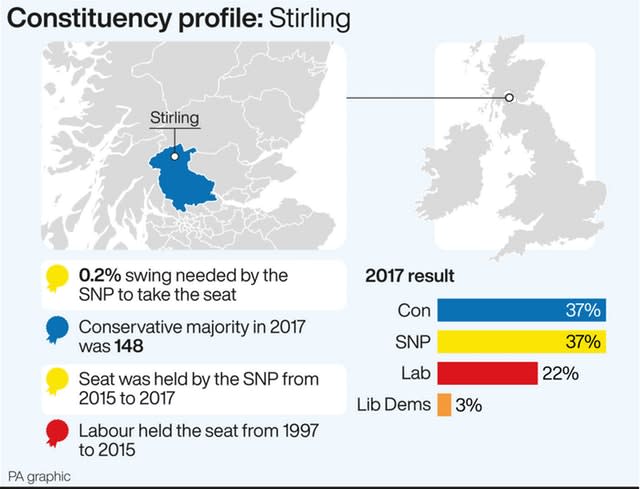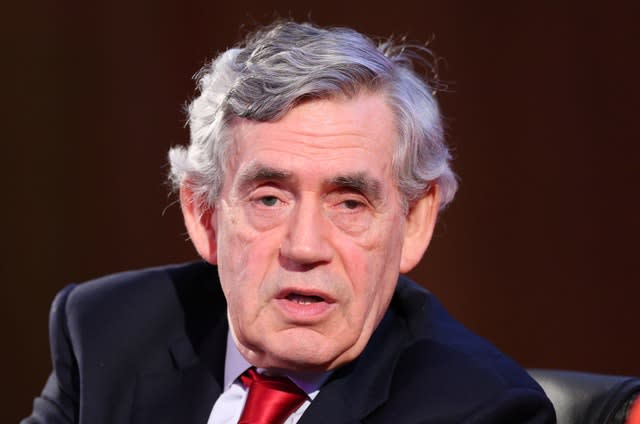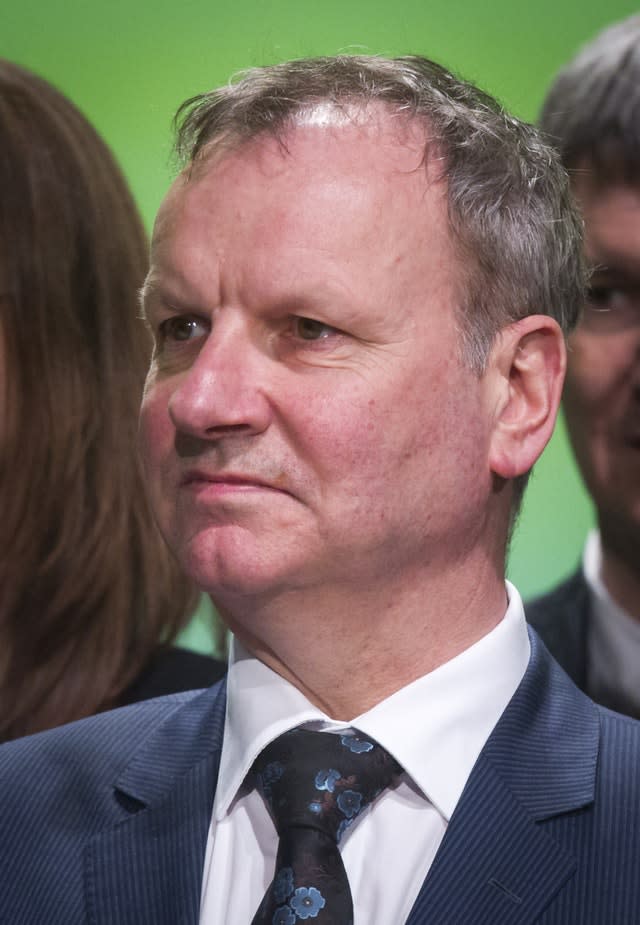Key battlegrounds in Scotland ahead of General Election
Some of the key marginals in this week’s General Election will be fought out in Scotland, with North East Fife held by the SNP on a majority of just two votes in the last ballot.
Liberal Democrat leader Jo Swinson could have a battle on her hands in East Dunbartonshire, which she reclaimed for her party in 2017, while the Tories will hope to retain Stirling after claiming a narrow win two years ago.
Meanwhile, Labour’s Lesley Laird defends Kirkcaldy and Cowdenbeath, which has been in the spotlight after the SNP’s candidate was suspended over allegations of anti-Semitism.
Here are the key seats to watch in Scotland on December 12.
– North East Fife

The most marginal constituency in all of the UK going into the General Election.
In 2017, Stephen Gethins of the SNP was re-elected as MP for the area after polling just two more votes than the Liberal Democrats – and after three recounts.
The seat is the number one target for the Liberal Democrats, who have had their candidate Wendy Chamberlain – the party’s spokeswoman for constitutional relations – in place since June 2018.
Mr Gethins was given a boost when former Lib Dem councillor Frances Melville announced she would be voting for the SNP this time round.
With both the SNP and Liberal Democrats opposed to Brexit, tactical voting around the issue of Scottish independence could be key in determining who wins the seat.
– Stirling

The Tories won Stirling from the SNP in 2017 – but not by much.
Stephen Kerr took the seat by just 148 votes, making it one of the SNP’s key targets.
MEP Alyn Smith is fighting to win it back but the Scottish Green Party’s decision to stand a candidate in the constituency could divide the pro-independence vote and help the Conservatives to hold on.
– East Dunbartonshire

Jo Swinson was the baby of the House when she was elected as MP for East Dunbartonshire in 2005 at the age of 25.
She represented the constituency until 2015, when a wave of support for the SNP in the aftermath of the independence referendum and a loss of support for the Liberal Democrats following their period in collation with the Tories at Westminster, led her to lose to the SNP’s John Nicolson.
But the snap General Election two years later gave her the opportunity to win the seat back as the SNP’s support fell from the high of 2015.
After being criticised for her stance on Brexit, with Ms Swinson vowing a Lib Dem Government would immediately revoke Article 50, there have been suggestions she could be about to lose her Westminster berth for a second time.
– East Renfrewshire

In the last decade, the constituency of East Renfrewshire, on the outskirts of Glasgow, has been represented by Labour, the SNP and the Conservatives.
The seat was once the safest Conservative constituency in all of Scotland until Labour secured a shock victory in 1997 as Tony Blair swept to power.
But as Labour fell out of fortune with Scottish voters, Jim Murphy – then-Scottish Labour leader – lost the constituency to the SNP in 2015.
A rise in support for the Scottish Conservatives helped Paul Masterton win the seat for the Tories just two years later but with almost three-quarters of voters in the area having backed Remain in the 2016 European referendum, the Tories’ determination to “get Brexit done” – in the words of the Prime Minister – could cost him votes this time round.
– Kirkcaldy and Cowdenbeath

This was Gordon Brown’s seat until the former Labour prime minister stepped down in 2015.
The massive surge in support for the SNP helped Nicola Sturgeon’s party seize it then but just two years later it was back in Labour’s hands, with Lesley Laird returned as the MP.
Ms Laird, the Scottish Labour deputy leader and shadow Scottish secretary, has a majority of just 259 votes but she received a boost when the SNP withdrew its support for candidate Neale Hanvey over alleged anti-Semitic comments.
But with nominations having closed when the allegations came to light, his name will remain on the ballot paper.
– Gordon

In one of the most dramatic results of the 2017 General Election, Conservative Colin Clark ousted former SNP leader and ex-first minister Alex Salmond from Gordon.
Mr Salmond had only returned to Westminster in 2015, winning the seat that had previously been a Liberal Democrat stronghold for Sir Malcolm Bruce.
While Mr Clark achieved a majority of just over 2,600 two years ago, both the Liberal Democrats and the SNP will be campaigning to win the seat back from him.
– Lanark and Hamilton East

A three-way marginal that Labour, the SNP and the Scottish Conservatives all have their eyes on winning.
Historically a safe Labour seat, the constituency fell to the SNP in the 2015 General Election when Nicola Sturgeon’s party won all but three of the 59 Scottish seats up for grabs – with Angela Crawley then winning by a majority of more than 10,000
Fast forward two years and the outcome was very different. While Ms Crawley was again returned as the MP for the area, her share of the vote fell from 48.8% to 32.6%.
Support for the Scottish Conservatives surged, putting them second with 32.1% of the vote, while Labour were only slightly further behind with 31.9%.
With the SNP defending a majority of 266 votes, the outcome could be close again.
– Perth and North Perthshire

The SNP’s Pete Wishart is defending a majority of just 221 in the seat, which he has held since it was created following boundary reforms in 2005.
Now the former Runrig musician is a target for the Scottish Conservatives, who want to oust him from Westminster after the party’s share of the vote rose by almost 10 points between 2015 and 2017.
The Tories control the local authority and have chosen councillor Angus Forbes as their candidate on December 12.

 Yahoo News
Yahoo News 